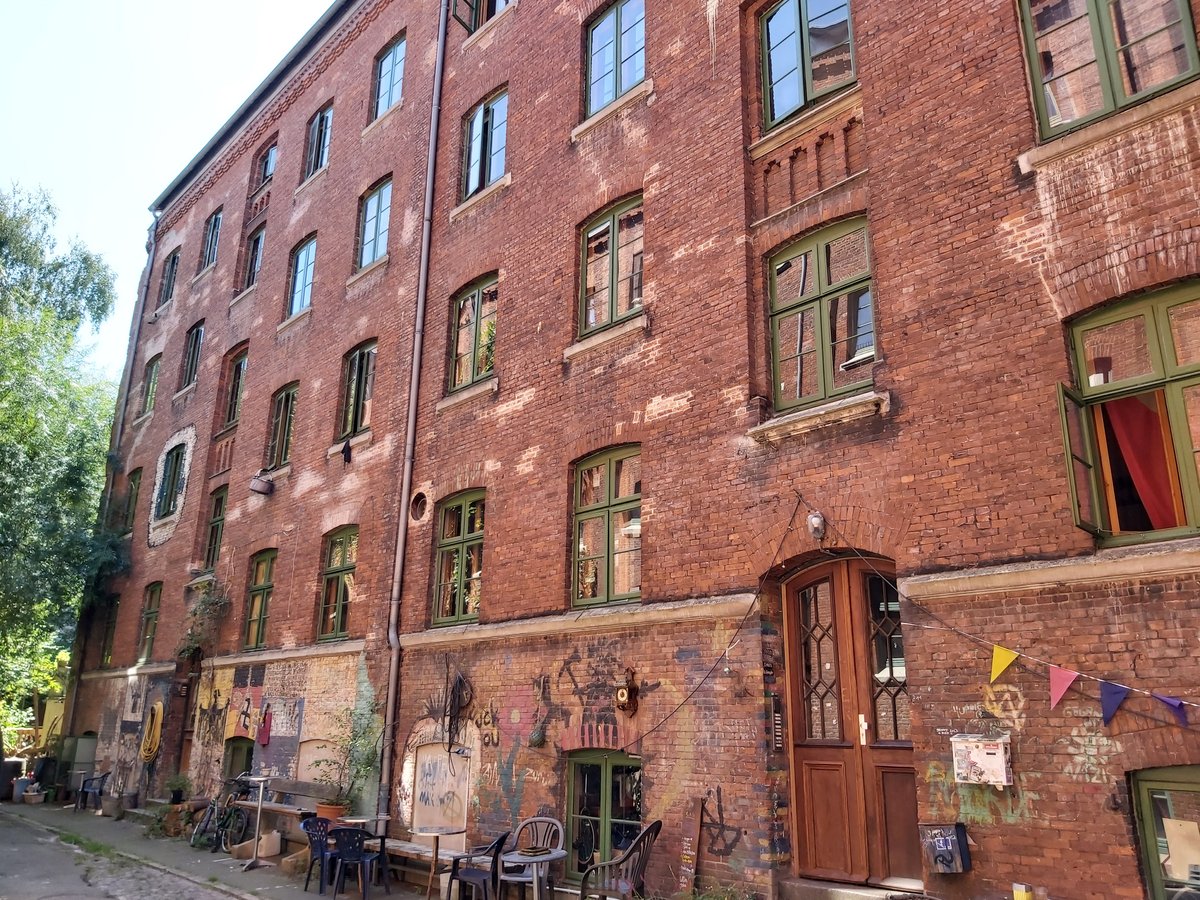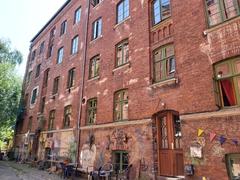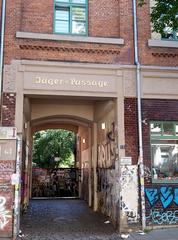
Große Freiheit Hamburg: Visiting Hours, Tickets, and Historical Sites Guide
Date: 03/07/2025
Introduction
Nestled in Hamburg’s vibrant St. Pauli district, Große Freiheit—meaning “Great Freedom”—is one of the city’s most iconic streets, famed for its unique mix of historical depth and pulsating nightlife. The street’s origins as a haven for religious and economic freedom in the 17th century have shaped its enduring legacy of tolerance and creativity. Today, Große Freiheit is celebrated for its legendary music venues, deep ties to The Beatles, and dynamic entertainment scene. This comprehensive guide provides everything you need to know for your visit: from historical background and key sites to practical travel tips, visiting hours, ticketing, and accessibility.
Table of Contents
- Introduction
- Historical Background
- Cultural Evolution
- Key Sights and Attractions
- Visiting Große Freiheit: Practical Information
- FAQs
- Conclusion
- References
Historical Background
Foundation and Early Liberties
Established in 1610 as part of Altona—then under Danish rule—Große Freiheit was unique for its era. Count Ernest of Schaumburg and Holstein-Pinneberg granted religious and commercial freedoms, allowing Catholics, Mennonites, and other non-Lutherans to worship and work freely. This was a notable contrast to restrictive, Lutheran-dominated Hamburg (Wikipedia).
The street’s economic openness allowed craftsmen and entrepreneurs, not bound by guild restrictions, to thrive. This foundation fostered a spirit of diversity and tolerance that still defines Große Freiheit today (Hamburg Ausflug).
Integration into Hamburg
For centuries, Große Freiheit remained part of Altona, separate from Hamburg. It was only after the Greater Hamburg Act of 1937/38 that the street, along with the district, became part of Hamburg proper (Wikipedia).
Cultural Evolution
Religious and Social Heritage
The tradition of religious freedom remains visible through landmarks such as St. Joseph Church, a Baroque Catholic church built as a testament to the area’s history of tolerance. The Mennonite congregation, once based here, further illustrates the multicultural roots of the street (Hamburg Ausflug).
Rise of Music and Nightlife
In the 20th century, Große Freiheit emerged as a nightlife hub, attracting artists, musicians, and entertainers from around the world. The street’s clubs—most notably Große Freiheit 36, Kaiserkeller, and Indra—hosted early gigs by The Beatles, cementing its place in pop culture history (Hamburg Travel). The 1944 film “Große Freiheit Nr. 7” celebrated the neighborhood’s maritime and nightlife culture.
Today, the street is packed with music venues, cabarets, LGBTQ+ bars, and performance spaces, reflecting St. Pauli’s spirit of inclusivity and artistic freedom.
Key Sights and Attractions
St. Joseph Church (St. Joseph Kirche)
A Catholic landmark with Baroque architecture, St. Joseph Church symbolizes the religious liberties that gave the street its name. The church is open for visitors most days and hosts concerts and services:
- Visiting Hours: Mon–Sat 9 AM–6 PM; Sun during services
- Tickets: Free entry
- Accessibility: Wheelchair accessible with assistance
Beatles-Platz
At the crossroads of Große Freiheit and Reeperbahn, Beatles-Platz honors The Beatles’ formative years in Hamburg. Life-sized silhouettes of the band and commemorative plaques make it a must-visit photo spot for music enthusiasts.
- Visiting Hours: 24/7
- Tickets: Free
- Accessibility: Fully accessible
Iconic Music Venues
Große Freiheit 36
Hamburg’s premier live music club, Große Freiheit 36, has hosted international acts like Robbie Williams and Coldplay since opening in 1985. The adjacent Kaiserkeller and Indra Club further the street’s musical legacy—both are famous for early Beatles performances.
- Opening Hours: Typically 8 PM–4 AM (varies by event)
- Tickets: €10–€40 depending on event
- Accessibility: Partial wheelchair access; confirm with venue
Additional Nightlife Spots
- Dollhouse: Burlesque and adult entertainment
- Lehmitz Bar: Dive bar with live music
- Mojo Club: Jazz and electronic music (on nearby Reeperbahn)
Visiting Große Freiheit: Practical Information
Visiting Hours and Tickets
- Street Access: Open 24/7
- Clubs/Bars: Typically 7 PM–5 AM; weekends may extend later
- Entrance Fees: Most venues charge €5–€30; special events may cost more. The street and public monuments are free.
Accessibility and Safety Tips
- Getting There: St. Pauli U-Bahn (U3 line) and Reeperbahn S-Bahn are a short walk away.
- Crowds: Weekends and festival nights are busiest.
- Mobility: Most of the street is pedestrian-friendly; some venues have limited wheelchair access.
- Safety: Police presence is strong, especially near the Davidwache station. Standard urban precautions apply.
Events and Festivals
Große Freiheit is a focal point during the annual Reeperbahn Festival each September—Europe’s largest club festival with hundreds of concerts and parties. Themed nights, Pride celebrations, and cultural events occur year-round, drawing diverse crowds (Hamburg Travel).
Nearby Historical Sites
Extend your visit with trips to:
- St. Michael’s Church (Michel)
- Elbphilharmonie concert hall
- Speicherstadt warehouse district
All are easily accessible via public transport and deepen your experience of Hamburg’s rich heritage.
FAQs
Q: What are the visiting hours for Große Freiheit?
A: The street is accessible 24/7; individual venues generally open from evening until early morning.
Q: Do I need a ticket to visit?
A: Street access and most public sites are free. Clubs and concerts require tickets, often available online or at the door.
Q: Is Große Freiheit accessible for wheelchair users?
A: The street itself is accessible. Some venues offer wheelchair access; check with specific locations in advance.
Q: How do I get there by public transport?
A: Use the St. Pauli U-Bahn (U3) or Reeperbahn S-Bahn station.
Q: Is Große Freiheit safe at night?
A: Yes, with a strong police presence, but use standard city precautions.
Q: Are there guided tours?
A: Yes, several companies offer Beatles and nightlife tours.
Conclusion
Große Freiheit epitomizes Hamburg’s rich blend of freedom, diversity, and creative energy. From its beginnings as a beacon of religious and commercial liberty to its legendary status as a global music and nightlife hub, the street offers a fascinating experience for every visitor. Whether exploring historic churches, following the Beatles trail, or reveling in late-night entertainment, Große Freiheit promises a memorable journey through Hamburg’s past and present.
For the latest event updates and insider tips, consider downloading the Audiala app. Follow us on social media to stay connected with Hamburg’s cultural scene, and make the most of your visit to Große Freiheit—one of Europe’s most legendary streets.
References
- Große Freiheit, 2024, Wikipedia (Wikipedia)
- Große Freiheit 36, 2024, Hamburg Travel (Hamburg Travel)
- Große Freiheit, 2024, Hamburg Ausflug (Hamburg Ausflug)
- Große Freiheit, 2024, Hamburg Tourism (Hamburg Tourism)
- Große Freiheit 36 Club, 2024, GPSmyCity (GPSmyCity)





















































































